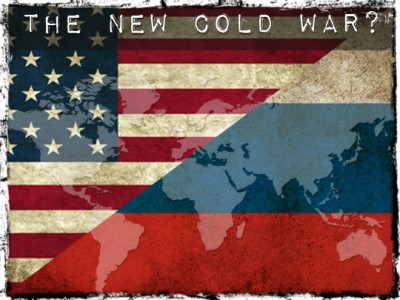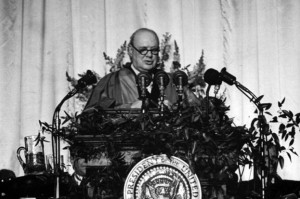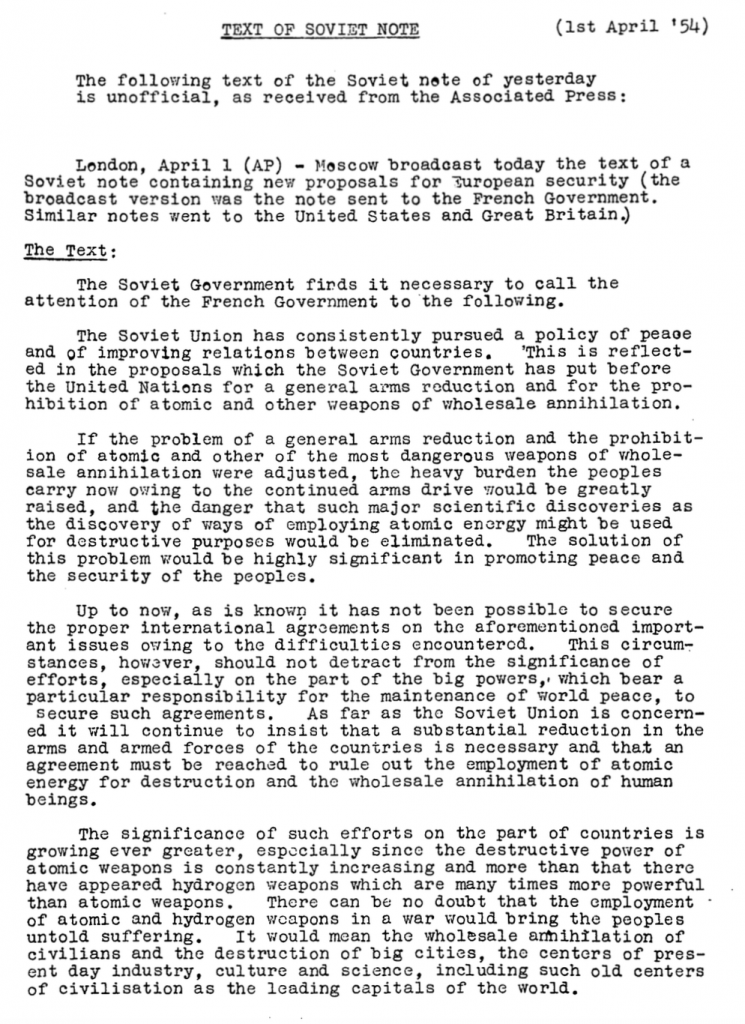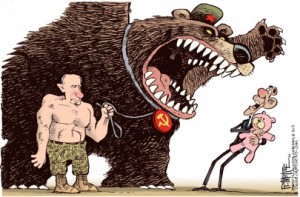Are the “Bad Russians” In For Yet Another (Hot or Cold) War? How did Former Allies become Adversaries?

This timely article was first published by Oriental Review and Global Research in April 2016
Do Russians want another war?
If you are Russian, you would be surprised by the question. Why would anyone want war (hot or cold)?
But if you are an American, and grew up fearing ‘bad Russians’ such question does not surprise you a bit. After all, the whole Cold War was based on the main assumption – Russians/Soviets want war!
Despite being allies during the World War II, the friendship between the Soviet Union and the United States was quickly replaced with an intense rivalry. Just one year after the victory over Nazi Germany, a new face of the Soviets was painted in the West – the ‘evil Russians’, who wanted one thing – world domination.
It would be absurd if it didn’t have such dire consequences – years of fear on the both sides of the Atlantic, and wasted resources, which could have been spent on normalizing people’s lives.
After losing more than 20 million people in the World War II, and experiencing hunger and devastation of ruined industries and infrastructure, the last thing the Soviets wanted after the WWII was another war. It took the Soviet Union decades to rebuild the country. People lived in deep poverty and everyone was longing for a normal life. Yes, U.S.S.R. was building up defense industry – because it didn’t want to be attacked again. Offense was never the purpose!
How did the former allies become the adversaries?
The fear of the Soviet Union was initiated by Kennan’s ‘Long telegram’, sent on February 22 1946 from Moscow to James Byrnes in State Department, Washington D.C. The telegram was later reprinted as an article in Foreign Affairs, called ‘The Sources of Soviet Conduct’, where he pictured Russians as too “insecure and untrusting and too obsessed with protecting their borders.” A portion of Kennan’s ‘Long Telegram’ was selectively quoted to the public to make an image of evil Russia that is looking to take over the world.
Another part of telegram, stating that the Soviet Union is actually much weaker than the US and doesn’t pose a danger to America was omitted: “Gauged against Western World as a whole, Soviets are still by far the weaker force.” Not just “weaker” – the economy of Soviet Union after the war was a fraction of American economy. But that part got ignored – the telegram was enough to send Pentagon, and propaganda machine into motion. Building weapons is a profitable business, after all.
On March 5, 1946, shortly after Kenan’s ‘Long Telegram’, Winston Churchill made his famous ‘Iron Curtain’ speech in Fulton, Missouri. Churchill proposed coordination of the Anglo-American military to halting the spread of Russian Communism, which he warned has become a “growing challenge and peril to Christian civilization.”
The former British Prime Minister, standing on the platform beside President Truman, warned that only through a military alliance of English-speaking nations can a clash of ideologies be prevented from bursting into a third world war. Despite agreeing in 1945 at Yalta Conference to post-war settlement, Churchill characterized Russia as dropping an ‘Iron Curtain’ in the middle of Europe in order to create ‘Spheres of Influence’.
The catchy phrases of the speech became the new language of the Cold War and created an image of Russia as an enemy of the West. Churchill insisted that the Soviets want war and they plan to conquer all of Europe. Former British Prime Minister warned that Moscow understands only force and that in order to stop Soviet ‘expansion’, the West has to unite around the United States, who has the necessary force (nuclear bomb).
Shortly after the United States demonstrated convincingly its nuclear capability in August 1945, the Soviet Union developed its own nuclear weapon, and the gloomy era of the arms race and fear-mongering on both sides would begin. The “Iron Curtain” speech at Fulton would turn former allies into enemies for many years to come.
Formation of NATO and Warsaw Pact
A year after Stalin died in 1953, the Kremlin asked to join NATO. In the declassified ‘note (Click to Download)’, dated April 1 1954, the Soviet government, asked Western leaders to “examine the matter of having the Soviet Union participate in the North Atlantic Treaty“, for which it received an answer that ‘the unrealistic nature of the proposal does not warrant discussion’.
Why did Soviets asked to join NATO? Naturally, Kremlin leaders believed that the alliance, uniting US and the Soviet Union in its fight against Germany could become a true security alliance. After the refusal, Russia had no choice but to establish its own security alliance, the Warsaw Pact, which was established in 1955.
In 2001, Kremlin’s request to join NATO once again was met with refusal from the alliance. Moscow again expected too much from so-called ‘strategic partnership’, which ended up to be in name only.
Why are we fighting the new Cold War?
The period of time since Vladimir Putin’s first presidency till now has been marked by a slow buildup of tension between the United States and Russia to the point when the Cold War II became a new reality. The media is complicit in heightening the tension by deliberately omitting or distorting the information and creating an image of ‘totalitarian regime’ in Russia.
Instead of tracing the true source of events in Ukraine and Syria, the major Western news sources blame the responsibility on Kremlin, taking it as far as claiming that Russia is fueling the instability in the Middle East and Ukraine in order to spread chaos to Europe. Such claims are unfounded and the opposite is true: the instability on Russia’s borders can harm Russia more than Europe.
There are several reasons for the return of confrontation, but the main reason is that United States had failed to understand Russia’s willingness to cooperate with the West in the early 1990s. The U.S. continued to treat Russia with mistrust. Russia was treated as a looser, and an attempt for cooperation with the West was perceived as a sign of economic weakness. Russia was treated as a beggar, who was asking to be liked, to join “gentlemen’s clubs”. And it was accepted, with much condescension from those “civilized gentlemen” to sit at some of the fine tables, as long as awkward Russian bear was on a leash.
When bear started showing some teeth, and growling once in a while, gentlemen started to worry and wonder if they haven’t made a mistake of dealing with such an unrefined creature? They didn’t care that the bear meant no harm – beast is a beast and should be dealt with accordingly! So, the taming of the beast began.
Slowly, but surely, the image of ‘aggressive Russia’ started to emerge. And thanks to misinformation about real causes of war in Georgia and Ukraine we got a total culmination, what CNN, Washington Post and the New York Times were “predicting” all along – ‘resurgent Russia’.
How can we avoid a confrontation between the two nuclear superpowers when Washington is determined to continue its information warfare, in which it determined to portray Russia in bad light, no matter what Russia does?
Just like the Cold War I, the Cold War II has its ideological underpinning, except, now it is not about communism versus capitalism, it is about multipolarity versus unipolarity. It just happened Russia was not willing to be a part of unipolar world. It just happened to be against Russian national character to be serving a “higher master”. How did it dare to disobey? Well, the nuclear weapons came handy for standing up to protect its national pride and its national interest in face of America bluntly stepping into Russia’s spheres of interest.
Is current U.S. – Russia state of relations a result of the U.S. blindly following its own grand strategy at any cost? According to Wolfowitz doctrine states are not allowed to have their own national interests, and no one can stay in the way of US global preeminence:
“Our first objective is to prevent the re-emergence of a new rival, either on the territory of the former Soviet Union or elsewhere, that poses a threat on the order of that posed formerly by the Soviet Union.”
In respect to the Middle East and Southwest Asia, Wolfowitz doctrine does not hide its objective: “our overall objective is to remain the predominant outside power in the region and preserve U.S. and Western access to the region’s oil.”
The Wolfowitz doctrine clearly states that “We must maintain the mechanism for deterring potential competitors from even aspiring to a larger regional or global role.” Russia is definitely a stumbling block to American goal of “dominating a region whose resources would, under consolidated control, be sufficient to generate global power.”
Like generations of Cold War fighters before him, Wolfowitz warned against the possible threat posed by a resurgent Russia:
“We continue to recognize that collectively the conventional forces of the states formerly comprising the Soviet Union retain the most military potential in all of Eurasia; and we do not dismiss the risks to stability in Europe from a nationalist backlash in Russia or efforts to reincorporate into Russia the newly independent republics of Ukraine, Belarus, and possibly others….’We must, however, be mindful that democratic change in Russia is not irreversible, and that despite its current travails, Russia will remain the strongest military power in Eurasia and the only power in the world with the capability of destroying the United States.”
Despite the two decades of Russia’s attempts at assuring the United States that strategic partnership between the two states is possible and desirable, American leadership never took these assurances seriously. The Cold War mentality never left the U.S. foreign policy. NATO expansion and the wave of Color revolutions in the former Soviet Union only consolidated a mistrust of the United States in Russia.
John Pilger wrote:
“How many people are aware that a world war has begun? At present, it is a war of propaganda, of lies and distraction, but this can change instantaneously with the first mistaken order, the first missile.”
“In the last 18 months, the greatest build-up of military forces since World War Two — led by the United States — is taking place along Russia’s western frontier. Not since Hitler invaded the Soviet Union have foreign troops presented such a demonstrable threat to Russia. Ukraine — once part of the Soviet Union — has become a CIA theme park. Having orchestrated a coup in Kiev, Washington effectively controls a regime that is next door and hostile to Russia: a regime rotten with Nazis, literally. Prominent parliamentary figures in Ukraine are the political descendants of the notorious OUN and UPA fascists. They openly praise Hitler and call for the persecution and expulsion of the Russian speaking minority. In Latvia, Lithuania and Estonia — next door to Russia — the U.S. military is deploying combat troops, tanks, heavy weapons. This extreme provocation of the world’s second nuclear power is met with silence in the West. “
We are back to fear and mistrust of each other as we were back in 1946. We already been at the brink of the nuclear war once, do we want to take another chance?




